With over a half of our planet’s population having a smartphone in their pocket, simply launching a website to sell products online is not enough. And almost 80% of smartphone users have purchased products using their mobile devices. Moreover, there are more people who have a phone than a desktop device, which is not surprising. Smartphones are cheaper and far more accessible, especially in developing parts of the world. This brings us to our topic: eCommerce app development.
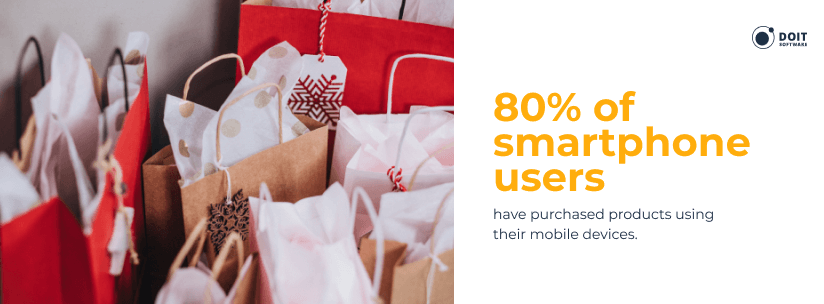
You can create a shopping app for any kind of item: clothes and shoes, cosmetics and pharma, groceries and beverages, sports and hobby goods, kitchen appliances and houseware, computer hardware and electronics, and other trending products. What are the benefits of making a shopping application?
The list of benefits looks very persuasive and might incentivize you to create a shopping app. Creating a shopping app is beneficial in multiple ways, including enhanced customer experience and automated business processes. Integrating QR codes can further simplify various interactions, making it easier for customers to access products or deals directly from their mobile screens. For example, using this QR code generator can streamline promotional campaigns by creating scannable links that lead shoppers directly to item pages or special offers. Such features provide both convenience and engagement for users.
In this article, we will learn how to create a shopping app and estimate the costs of shopping app development, as well as which features are essential and how to choose the right tech stack.
Before we dive deeper into the technical part of the process, let’s take a look at the most successful examples of online shopping apps. Besides learning from their examples, we can also get inspired by the innovations and advanced features they have implemented.
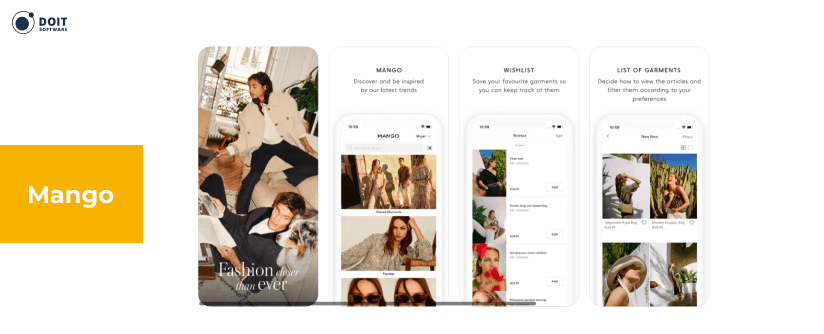
Number of users: 200,000
Unique value proposition: Barcode scan that allows you to look for the garment in different colors and sizes.
Features:
Features:
Features:
Features:
Features:
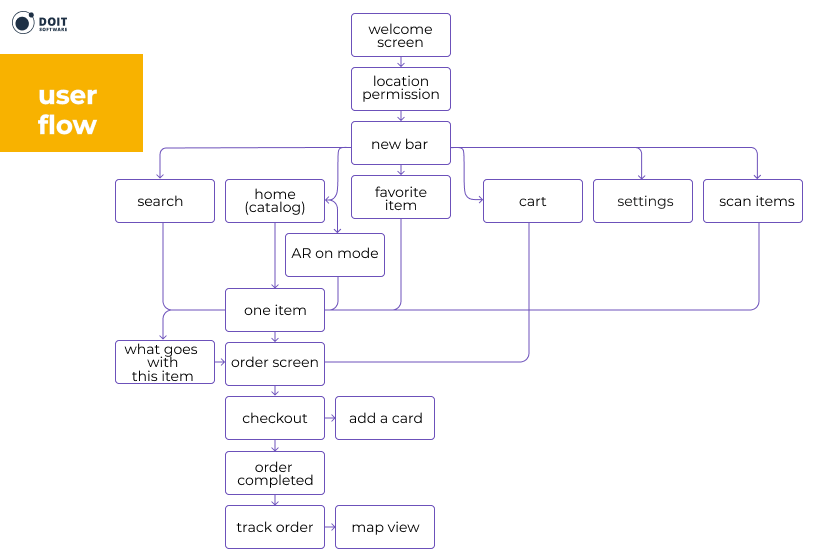
We will begin with the must-have features you need to implement to create a shopping app. Essential features are app functions that are sufficient to solve the user problem and in this case, they are the ones that allow users to find an item and make a purchase. Modern shopping apps have a plethora of extra functions that make them stand out, but they have all started out with a basic application.
Although the user registration feature should be implemented, it is recommended to allow browsing without having to use this process. Allowing your users to go through your products without going through the registration process will expand your audience. Besides that, provide various registration options like email, phone number, social networks, etc. Limiting your users to only one type of registration is detrimental to your customer experience and will cause a lot of signup abandonments.
Another important feature is profile editing, where users can alter their personal information in case they move or change their phone numbers and email addresses. Make sure to create a shopping app with a simple profile editing menu to allow customers make quick changes to their financial, personal, and other information.
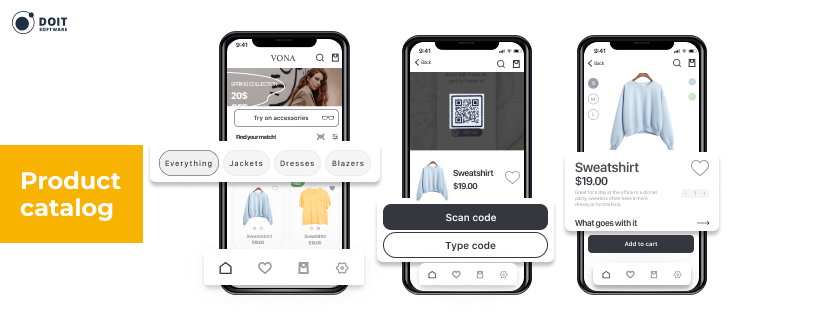
This feature is also quite obvious as every online shop application requires a catalog of its products. Create a shopping app with an organized and categorized catalog to simplify browsing. The catalog should involve elaborate product descriptions and pictures of the items. Users expect to discover information about the size, color, fabric, style, and type of the item to help them make the best decision. Implement the best e-commerce image optimization tips to increase the conversion rate and boost sales. For example, a white background for images is a must-have. Also, don’t forget to add shadows and show multiple angles of your goods to present your products in the best way.
There are a few things that are very important when it comes to in-app search engines. First of all, it should be extremely quick and provide results immediately. Second, your engine should be supplied with filters and indexing to help users swiftly navigate their way in the app. Finally, you can add extra features such as spelling corrections, search autocomplete, etc., to streamline the searching experience.

A shopping cart is a feature that gives users access to the items they selected. Create a shopping app with the ability to add, remove, or change the items in the basket, look at the item descriptions, see the individual prices, and also look at the total amount of their purchase.
The most important aspect of payment integration is safety. Data breaches are the fastest gateway to losing your customer base and damaging your reputation. That’s why it’s important to create a shopping app with an extremely high level of security and data protection.
The versatility of options is another vital aspect: PayPal, Stripe, credit and debit card, cash on delivery, etc. The options depend on the location of the targeted user group, as Paypal is popular in Europe, whereas Southeastern Asian countries still mostly pay with cash. Note that PayPal charges a transaction fee. You can estimate it with a PayPal fees calculator.

Regardless of how well thought out and constructed your app is, your customers might eventually run into some issues. Make sure to provide easily accessible and responsive customer support to swiftly resolve any issues. Either via a phone, email, chat, customer service apps, or any other communication format, allowing customers to contact support managers and get help is a necessity.
Finally, you cannot create a shopping app without an admin panel. The admin panel is the behind-the-scenes part of the application that helps business owners manage the content, take care of orders and reviews, ensure payments, etc. There are quite a handful of things that need to be implemented to provide smooth processes.
To learn more about the must-have features of an eCommerce app, get in touch with DOIT Software. We are a team of experts that delivers great mobile solutions with ongoing post-release maintenance. Contact us to get a consultation and create a shopping app MVP within a few months.
Essential features allow you to create an MVP, a Minimum Viable Product, that covers a customer’s primary needs. In this case, essential features are enough to help a user find the right product and make the purchase. Additional features help you to stand out from the competition. The implementation of Augmented Reality or thoughtful nuances like wishlists helps businesses offer a unique experience to their audiences and convince the customer to recommend the app to their friends and family.
When you create a shopping app, first you need to test the idea. How to create an online store that attracts user attention? By collecting and analyzing user feedback. It allows you to adopt the insights from feedback and complement your app with new exciting features.
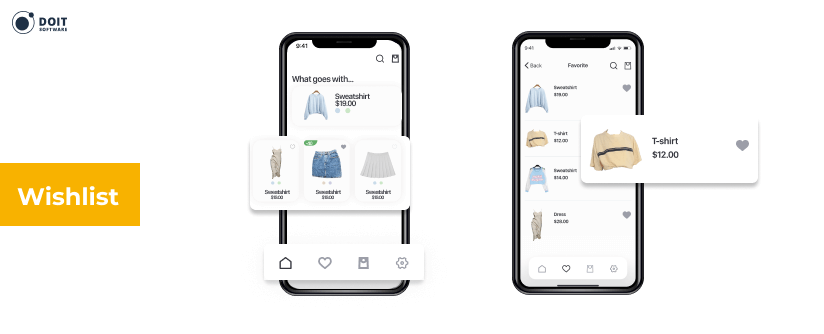
People enjoy window shopping in real life and the same goes for applications. How to make a shopping app that allows digital window shopping? A wishlist is a separate “cart” that contains the items that a customer liked but could not buy right away. The reasons could vary, from not having the money for it now, to choosing gifts for Christmas ahead of time. Allow your customers to choose their favorite items and store them on the wishlist. Later, you can send them reminders and discounts to incentivize users to finish their shopping.
![]()
Although not technically necessary, the order tracking option has become a part of every eCommerce app. This feature allows your customers to trace their order, from the confirmation on your side up until the time of delivery. Including a QR code in your order tracking process can further streamline this experience by allowing customers to quickly scan the code to access real-time updates on their order status. Letting your customers know where their package is at any moment and when it is going to be delivered is a great practice, as it shows that you are respectful of your clients’ time. Sitting at home the whole day, sometimes even several days, and waiting for the courier to deliver their order could be stressful and will eventually discourage people from using your services.
Map integration helps customers find your brick-and-mortar shops in their area. On top of that, if you offer express delivery, people could actually track their package on the map. Map integration is a great way of improving the user experience and increasing the sales revenue of your physical shops. Without the map, people might not even know whether you have an actual store near their location. Create a shopping app with an interactive map that will incentivize users to check out your store.
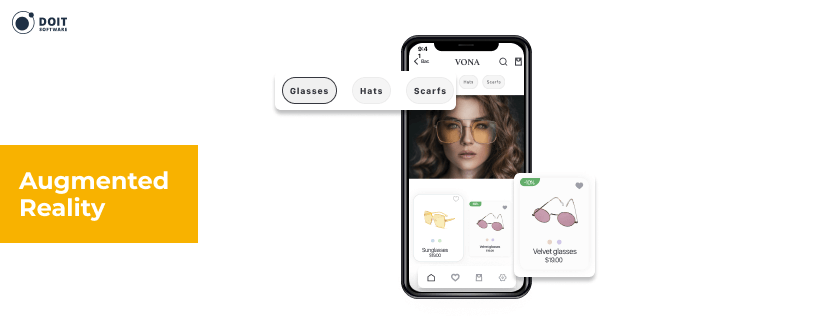
AR is slowly penetrating the market of eCommerce app development. Augmented Reality is a feature that allows your customers to try on clothes or makeup via their phones. The way it works is through your camera in real-time. Users select the lipstick or eyeshadows they would like to try on, and the application automatically “applies” it to the user on camera. If you wish to create a shopping app for clothes, the AR feature will help them to try on sunglasses, hats, personalised gilet, and other accessories.
This feature is quite expensive and advanced, which is why it is definitely not essential for an online store app. However, it will help you stand out from the competition and allure new customers to try your products.
How to make a shop online with personalized suggestions? ML recommendations is a feature that collects and analyzes customer information such as search and order history, demographics, etc., and makes predictions about their shopping behavior. As a result, the app suggests possible items that the user might like. Alternatively, you can also offer items that go well together with the piece of clothing that has been selected.

How to create an app to sell items both online and offline? If you have brick-and-mortar stores, iBeacon is a tool for user experience improvement. Basically, it is a device that can be installed somewhere in the store and connected to the customer’s application via Bluetooth. After a successful connection, the device gains access to the customer’s purchase and search history which is then transmitted to the salespeople at the store. This way, sales personnel can help customers find what they want based on their order history, or simply suggest the needed size of their item. It drastically enhances the shopping experience for your customers.
If you would like to learn how to make an online store with built-in self-promotion, then implement sharing options. Make sure to create a shopping app with shareable images and pages. First of all, users would want to share their findings with friends to ask for their opinions. Secondly, this will make an amazing free advertisement for your business. There are a few options here: you can allow users to take quick screenshots with a certain button on the interface, share the page via WhatsApp or Telegram, or even post it on social media platforms.

A Barcode scanner is another useful feature for physical store owners. When your customers look for items at your brick-and-mortar location and cannot find the price tag, they can simply scan the barcode and get access to all the information about this item. This removes the burden of being around the customers for salespeople, and enhances the user experience for your clients. Finally, the history of searches remains in the app and this allows users to think about their findings and order these items later.
How to make a selling app that helps businesses keep users engaged and interested in the application? Using push notifications, you can inform your audience about your discounts and special offers, new arrivals and collections, as well as brand events. Push notifications close the gap between your business and your customer, and allow for building a tighter connection.
We have talked about customer support earlier in the article, but online chat goes beyond that as it offers a 24/7 connection. Use an AI chatbot for your online sales app to deliver instant support to your customers. Having chatbots is much more affordable than maintaining a call center. On top of that, chatbots will learn from interacting with your customers and become smarter when it comes to answering popular questions. However, create a shopping app with some human support for those situations when the chatbot cannot answer a difficult or unique question, the customer can be referred to a manager for help.
Extra features is a great way to win your users. Implementing features like Augmented Reality or personalised user recommendations calls for precise and clear descriptions to resonate with users. Also, utilising a rewording assistant, developers can refine app content easily, making technical jargon accessible while ensuring clarity. Seamless integration of such AI-driven tools can lead to notable enhancements in both user engagement and content effectiveness.
Now that you know which features to implement, let’s delve into the technical details. In this section, we will focus on the technical stack that is required to build a shop app and the team composition that’s necessary.
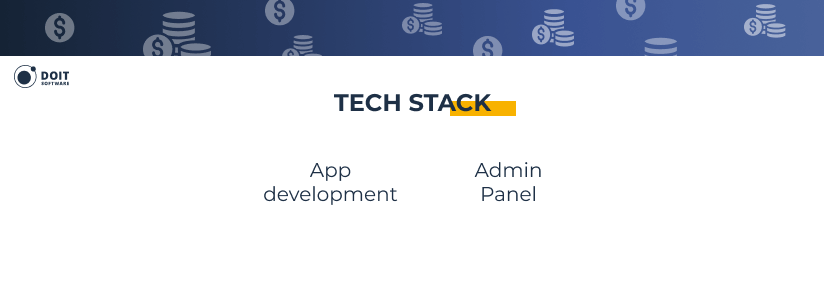
Your technical stack depends on a variety of aspects, but first and foremost is the platform choice. Are you building shopping applications for Android or iOS? Maybe you would like to launch apps on both operating systems? Here we have two options: native and cross-platform app development.
Native mobile development refers to building a mobile shopping application for one platform. For example, you can use Kotlin or Java to create an Android app and Swift or Objective-C to build an iOS application. The benefits of native development are increased user experience and excellent performance. The downside is quite apparent: you will be building two separate boutique shopping apps, thus spending from 30% to 40% more money.
Cross-platform mobile development allows coders to create a single codebase and use it for both applications on Android and iOS. Although some inputs from native developers will be required to adopt the native UI elements, this type of app development is a little bit cheaper. The disadvantage of platform-independent development is the limited functionality and poorer performance. At the same time, the disadvantages do not matter when it comes to building minimum viable products, and cross-platform development is the perfect cost-efficient process to build MVPs. However, with the right approach, professional developers, and advanced cross-platform frameworks like Flutter or React Native, you can create a shopping app that performs well and is native-like.
Mobile app backend is the behind the scenes of the application such as database, servers, and everything else that keeps the app afloat. Node is the best backend JS runtime environment to create a shopping app. It is fast, scalable, flexible, and accessible.
Whether it is native or cross-platform, a shopping app needs an admin panel. For this, we highly recommend ReactJS for the frontend. This JavaScript framework is known for delivering great user interfaces and providing code reusability. Other great alternatives are Vue.js, Svelte, and Backbone.js. For the backend, you can use NodeJs. The technology is fast, scalable, and thrives when it comes to real-time web applications.
The eCommerce application development team consists of a UX/UI designer, QA team, project manager, and developers. The software development team depends on the type of development: native Android coding requires Kotlin or Java developers, native iOS coding needs Swift or Objective-C developers, whereas for cross-platform development we would recommend hiring Flutter or React Native coders. For the admin panel creation, a ReactJS frontend developer and NodeJS backend developer make a great team.

eCommerce mobile app development cost depends on the choice of the tech stack, app complexity, and the location of the software development vendor. To create an accurate estimate and achieve a smooth development process without facing endless pitfalls, make sure to include the discovery phase into your plan. This phase is crucial for a successful development process as it helps to pinpoint user needs, establish technical requirements, and set up your business goals.
The discovery phase is the requirements gathering and marketing research part of the development process. During the discovery phase, it is important to try to identify user needs, technical requirements, establish business goals, and assess the costs for the duration of the project. This stage varies from company to company and sometimes is neglected. The DOIT Software team believes that investing time in this phase pays off as you will be prepared for the next stages and make data-driven projections. Moreover, you will have a clearer understanding of your shopping cart app and reduce the number of iterations. Finally, the discovery phase will help you assess the software development vendor and figure out whether you would like to work together in the future. The Discovery phase for a shopping app can take about 260 hours.
It consists of several necessary steps:
Project init
16 - 18
Description of the main features' logic
4 - 6
Mind map creation
8 - 10
Clickable prototype creation
100 - 105
Solution architecture document
16 - 20
Functional requirements described in a user-story format
32 - 35
QA software requirements
8 - 10
Prototype test
4 - 6
Resources & communication plan
2 - 4
Accurate estimation
9 - 11
Communication, brainstorms
35 - 40
Total:
260 - 265
Mobile app development
Authorization
Splash / Loading screen
52 - 64
User registration
User Login
Catalog Search
Main screen
106 - 126
Search results
QR/Barcode scanner
Manual code search
Categories & Filtering
Products
Product view (images, color/size, title, description, price)
95 - 111
Add to Favorite/Cart
List of suggestions
List of favorite items
Try mode
Cart & Checkout
Cart (Items, Total, Shipping address)
165 - 194
Checkout (Choose payment, Add payment method)
Order confirmation
Order Tracking (Stages with Map integration, Push notifications)
User profile
Edit profile
92 - 114
Change password
Shipping address
Payment methods
Your favorite items
Support
Contact block
27 - 34
Map integration
Total:
537 - 642
Admin panel development
Login interface (user id, passwords)
13 - 15
Forgot password (reset the password)
6 - 8
Dashboard/Orders (filtering, search, sorting, order status management, order view)
45 - 50
Catalog (filter, search, edit, remove, disable items, add special price, app new items)
105 - 115
Banner in the app (add, disable, remove, edit)
20 - 23
Try mode (edit, remove, disable)
20 - 22
Edit contact information
15 - 17
Manage users (search, sort, view, disable, enable user's profile, check user order history and statuses)
50 - 55
Reporting (filter registered users report, orders report)
42 - 45
Total:
316 - 350
Project init
Project initiation
22 - 32
Requirements review and planning
12 - 16
Environment setup
22 - 26
Tech documentation creation
28 - 40
System structure creation
16 - 20
Mobile Stores accounts creation
14 - 28
Total:
114 - 162
To understand your budget more accurately you should add an extra 20-50% of the total development hours for bug fixing and about 10-20% for all communications.
Creating a shopping app like the one described above with the DOIT Software team will take about 5-7 months. If you decide to move on with cross-platform app development the total budget for a shopping app and admin panel will be about $67,000 – $77,000. Native mobile apps and an admin panel will cost you $75,000 – $85,000.
Contact us to get a quote and to learn more about the costs of shopping app development. Vast experience in various fields, including eCommerce, allows us to build solutions that stand out in the market. If you want quality, smooth communication, and reliability, create a shopping app with the DOIT Software team.
Besides the actual shopping store apps development process, there are a few other things that must be addressed. For example, the choice of a business model, monetization strategy, and market analysis. In this part, we will take a closer look at the business side of the process and learn how to create a shopping app.
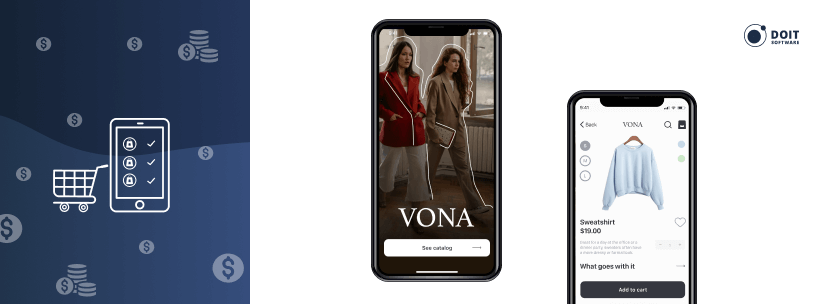
Basically, you have three options for a business model that suits the eCommerce realm. You can create B2B, B2C, or C2C platforms.
B2B or business-to-business is a model that focuses on selling products from one business to another. Examples are ACME iOS and Android, Pepperi iOS and Android, Nuorder iOS.
B2C or business-to-customer is the most traditional business model in the eCommerce industry. B2C shopping cart apps are solutions that allow businesses to sell products to end user customers. The examples are vast: Walmart iOS and Android, Target iOS and Android, Alibaba iOS and Android. If you want to develop an app like Amazon iOS and Android, B2C is your choice.
C2C or customer-to-customer is an eCommerce business model that allows customers to sell their products to other customers. Examples include eBay iOS and Android, Etsy iOS and Android, and Craigslist iOS and Android.
How to create an online store that generates stable income? Monetization strategy is contingent on the business model that you choose. For B2B and B2C platforms, your monetization strategy begins with sales revenue. The C2C platform is a different story and does not generate pure sales revenue for the owner. However, you can take a commission for every transaction that your customers make. Besides, all three types of business models can utilize advertisements or create a SaaS business. SaaS platforms charge their users monthly or yearly fees to use their service.

Finally, before you make any moves with your eCommerce app, conduct a thorough market research process. Investigate the market trends, strengths and weaknesses of your primary competition, and learn as much as you can about your target audience. Create user personas to understand the needs and pain points of the potential audience and offer them a solution that will truly help them. Conduct a SWOT analysis to uncover hidden risks and opportunities for your business. Risk anticipation will help you mitigate them, whereas knowing your strengths will allow you to exploit them and find your unique value proposition.
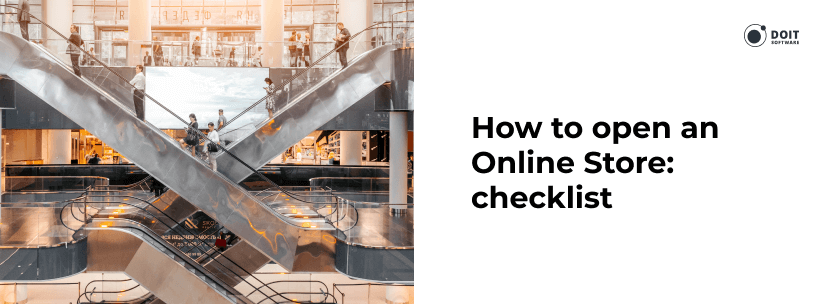
Before you decide to create a shopping app, make a checklist with your next moves. You can also use our list, or at least get some pointers from it. How to start an online shopping app without encountering common mistakes?
eCommerce app development is a long and complex process that might seem overwhelming at first. However, with the right vendor, you will create a shopping app with little to no effort. DOIT Software is a team of custom software development experts who can deliver you the best online shopping app for your particular needs and requirements. Contact DOIT Software to learn more about how to make an online store and get a quote for the project. Our team is ready to take on your idea and create a high-performance application that drives your business.
Transform your idea into a successful product with the DOIT Software team.
Contact usResearch the market to learn your competition and target audience and contact a software development vendor to get a budget estimation. After making sure the vendor is professional and responsive, discuss your future collaboration and begin your new project together.
Based on our experience, native app development for an eCommerce app with a basic set of features is roughly $75,000 – $85,000 for both platforms, whereas cross-platform development costs $67,000 – $77,000.
The number one retail app for Android, iOS and for the web remains Amazon. However, let this not discourage you, as many businesses launch their own highly successful niche shopping apps.
A successful eCommerce application has easy-to-use navigation, provides the highest security measures, and offers something unique, like AR experience, iBeacons, personalized recommendations, etc.
There are a few essential features for an online store app: user registration and signup, product catalog and search, shopping cart, checkout and payment gateways, and customer support.










